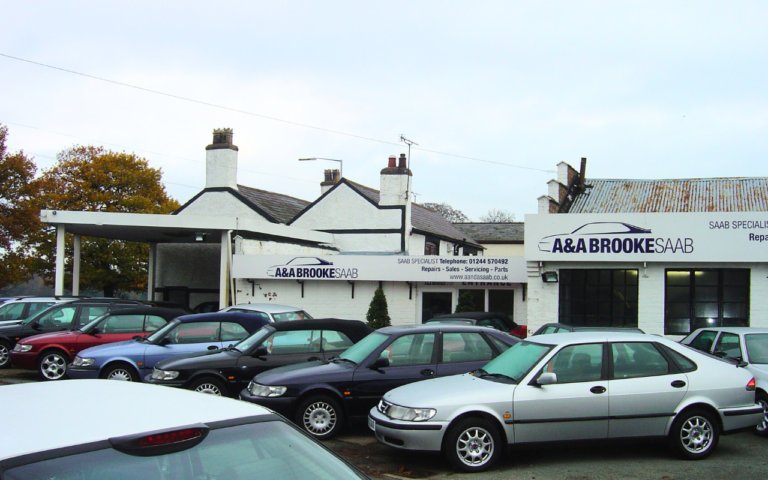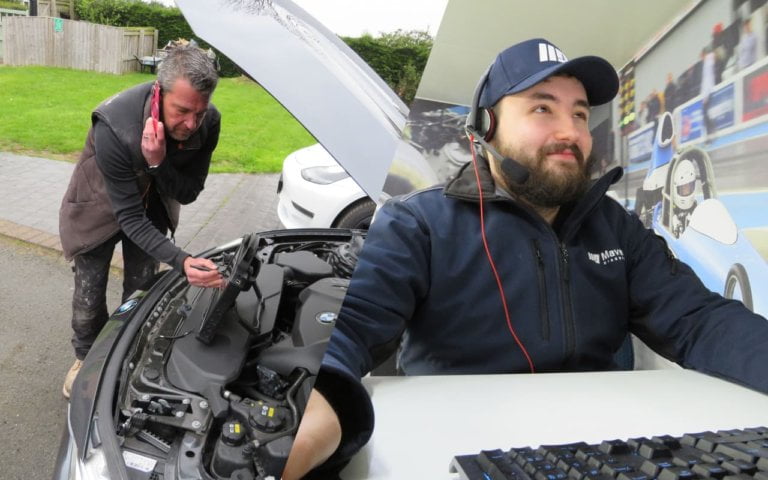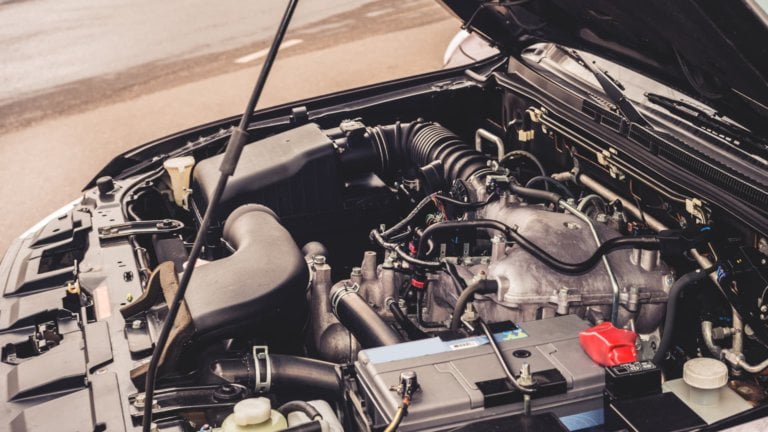Over the last 25 years, I have worked as a diagnostic technician, running my own workshops. I have sold and supported aftermarket and OEM diagnostic tools, I work with manufacturers to develop diagnostic tools and have developed and carried out diagnostics training programs.
I am now helping the Independent Automotive Aftermarket Federation (IAAF) and UK AFCAR to build a case to fight for the UK aftermarket workshops’ right to keep block exemption (MVBER) beyond 2023. Having the right to use OEM tools and data in the future is the single most important thing to ensure our future. I will explain why, and more importantly, what you need to do, to prepare for the future and what you can do right now.
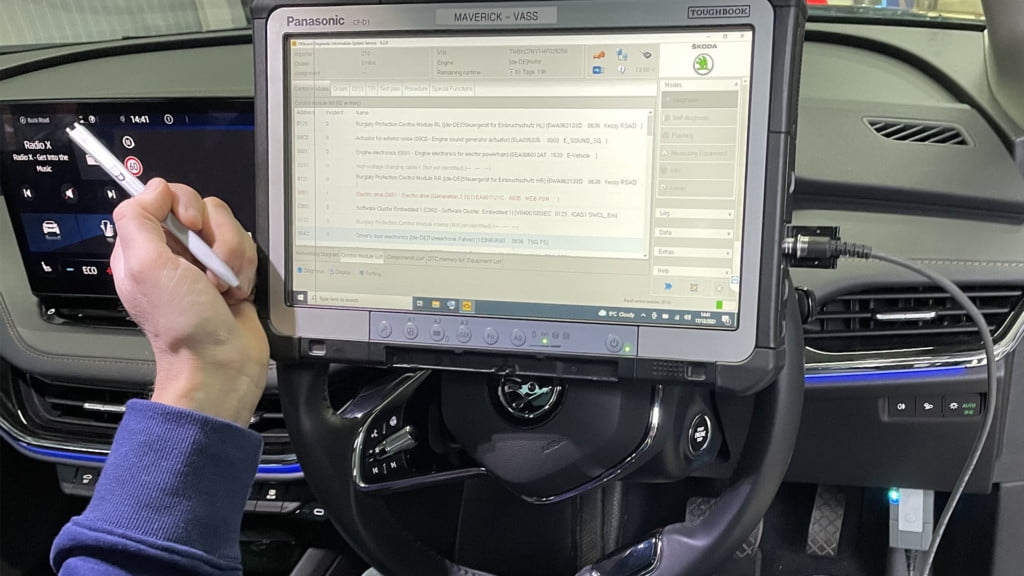
Let’s start with a bit of honesty,
I’m a diagnostic tool hoarder. I have cupboards full of old defunct diagnostic tools – some are useful, some are not. I have found most workshop owners are guilty of this. Most of these relics were out of subscription years ago, some cost me over £3,000, and I often wonder did they ever pay for themselves?
To find the answer we need to look back at the beginning of modern diagnostics, this truly started (post flash code era) in the late 90s, most workshops were happy if they had a tool that could communicate with a car at all. Diagnostics methods in the early days were to “clear the code” and hope for the best. If the MIL came back on, replace the component mentioned in the fault description, all are very hit and miss. Thankfully we are all a little more educated now, however, if you are still using the “replacement part diagnostic” technique please carry on reading.
Most workshops, (I included myself in this), did not charge for an initial diagnostic check, we offered a “quick look for free” or “I will just knock the light out for you, Mrs Jones”. What we did, in effect, was lower the value of the tools and service we were providing, a bad position that is hard to backtrack from.
The real questions are, did we even get a return on investment from any of these tools, were we simply keeping “Mrs Jones” on the road at a staggering £50 per diagnostic session? How do we get a return on these modern tools and how do we keep up?
20 years on and with the benefit of hindsight, the smart successful workshops have an initial diagnostics assessment fee and an hourly diagnostic fee, in addition to a normal labour fee. We all need to pay for the additional training, software subscriptions, OEM fees, updating fees, etc, that are needed to use and run these tools.
So why do we need to all align with these ideas, what makes a smart successful workshop profitable? Let’s start at the basics.
A modern vehicle is basically a collection of laptops on wheels, if you are a bit of a technophobe this scenario is only amplified when you investigate the latest fully digital vehicles with multiple systems including driver assistance, EV and hybrid.
You may be thinking as an independent workshop: How on earth do I keep up with all of this?
In simple terms there is no quick fix, a “does it all” diagnostics tool, just does not exist. My experience has shown that your response needs to be to readjust your view of diagnostics and business and make an opportunity out of complexity.
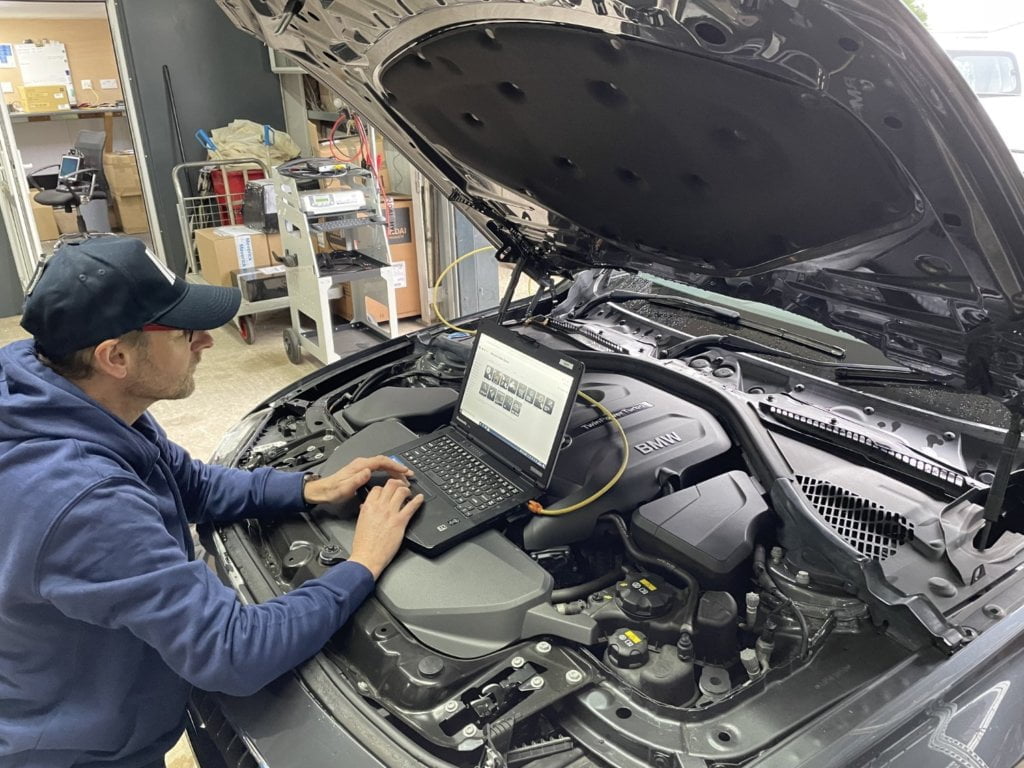
How to understand the diagnostic tools available
Aftermarket Tools
Aftermarket tools, what are they? All legitimate aftermarket diagnostic tools are reverse-engineering from an OEM tool, this reverse-engineering is totally legal. You are replicating a process, you are not copying a process. In the case that they are not reverse-engineered, just copied, this inevitably ends in very expensive legal action with the OEM in question.
Vehicle Software is now recognised as the key component of all vehicles. OEMs are understandably very protective about copyright as they spend 100’s of millions a year on development. To keep vehicles in their own dealer network and to safeguard their huge investments, OEM’s make software and vehicles very secure and extremely difficult to reverse-engineer. How they achieve this is to store software on their cloud portals and to add security gateway modules to vehicles. These changes have given the manufacturers the ability to change the software on a daily basis, to make improvements, add new chassis numbers and to fix historic software issues. The aftermarket tool manufacturers simply cannot keep up with the changes.
To be clear, aftermarket tools will always have their place, I use them every day, but they will never have the ability to carry out software updates and they will never have anywhere near the depth of an OEM tool. As you and I, the independent workshops already know, the depth of coverage has dropped dramatically off these tools over the last few years.
Pass-Thru
What about pass-thru? I hear you say. I have been personally involved with PT since 2006, it was a great hope for the aftermarket but it has been a big let-down influenced by the vehicle manufacturers’ security policies. Pass-thru does not give the full diagnostics access and the speed of programming of an original OEM tool. As you are generally paying by the hour, it will cost you more than an OEM tool in the long run.
Remote Diagnostic Tools
Remote diagnostic tools give only limited programming functionality, the hourly cost is high as you are not actually doing the job yourself, so not a good return on investment. Plus, if the OEMs have their way, remote diagnostics suppliers using OEM tools will be shut down for security violation reasons. They say they can’t keep track of who is using the tool on who’s vehicles, this would be a real problem if you solely rely on these remote tools.
OEM Tools
OEM tools present the best option but need regular updating and have ongoing usage costs associated with them, they do give the best option for accurate information and guided diagnostics. There are processes to follow to register with OEM’s and you may have to adjust your business plan slightly to get in line with the OEM’s policies.
To help explain my own diagnostics business philosophy, I want you to ask yourself the question, “Do you think a local main dealer technician, naturally knows more than you?” I doubt it very much. We all know the saying, “a bad workman blames his tools”. This does not apply in the world of modern diagnostics. Due to the vast complexity of vehicles, it levels the playing field and the main dealer tech and you are only as good as the tools, information, and training available.
Here is how you can turn these complexities into opportunities and a successful business. Because of block exemption rules, you – the independent workshop, have the right to have access to all that OEM information, diagnostic data, diagnostic tools and training that has cost the OEM’s millions to develop. This all has a cost, but not as much as you would think (typically €11 per hour) most OEMs offer pay per document or pay by the hour. In other words, you have the right to compete directly with your local main dealer, so why not embrace the challenge?
Next, I ask you to think about the future of your business, where do you want to be? What vehicle do you want to be fixing in five years’ time? Research and explore what path gives you the best possible return on investment. Finally, start to plan training, tooling and vehicle coverage for at least the next 5-10 years.
I hope you find my guidance useful, they have been developed after dealing with hundreds of workshops big and small over the last 25 years.
Here is a summary of my tips to help you on your way:
Don’t bury your head about change
Hybrid/ EV, advanced driver systems and advanced digital diagnostics, they are already here and in the independent aftermarket workshops.
Charge for everything
Charge for everything as soon as the diagnostic tool is plugged in it starts the clock.
Use an aftermarket tool
Use an aftermarket tool as a fast not best solution, read the initial fault codes, see if it is an easy fix, and don’t 100% rely on the results.
Use a real live OEM-level technical data system
Use a real live OEM-level technical data system to see if there are any technical service bulletins available or know verified fixes, as a lot of problems are well-known by OEMs.
An increasing number of faults can be fixed by a software update, this can stop you from chasing a known fault for days.
Don’t Google faults
Googling faults is the worst thing you can do. Inevitably you will end up getting tied up in knots with opinions, not verified solutions, it’s the modern version of “a man down the pub says”.
Subscribe to a live vehicle technical support service,
Subscribing to a live technical support service is essential, as a second set of eyes on a job and is far cheaper than employing your own group of master techs. You will learn and earn money while someone else is looking at the problem.
Think about specialising
Look at what cars you repaired the most during the last few years, and think about specialisation or cutting down to 5 or 6 key brands to focus your attention on.
Look at OEM tools
OEM tools are accurate and get around all security issues and software updating issues, they are not expensive or expensive to run and you should pass on the cost to the customer. You will still be cheaper than the local main dealer and you get to keep your customers.
Get as much training as possible
You should be improving through training, whether it’s online or live. Invest the time and money. It will profit you in both time and money in the long and short term.
If you have not done any training for a while, don’t be tempted to jump in too deep too quickly. Look at doing the basics again such as “sensors and actuators”, things move on very fast, we all need to get refreshed on the basics.
Invest in a decent IT infrastructure
Invest in IT infrastructure such as LAN sockets in the workshop, and decent high speed over 50Mbps broadband.
Everything in the future is going cloud-based and updates and diagnostics will eventually be carried out over WIFI.
Start to invest now
“little and often” is best, build up your knowledge bases and training alongside your tools, you don’t want to start the process in five years’ time and be forced to invest a small fortune just to stay in business


